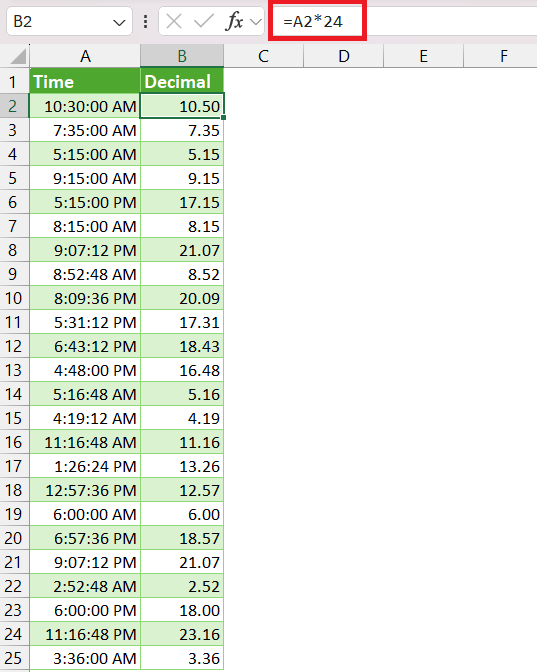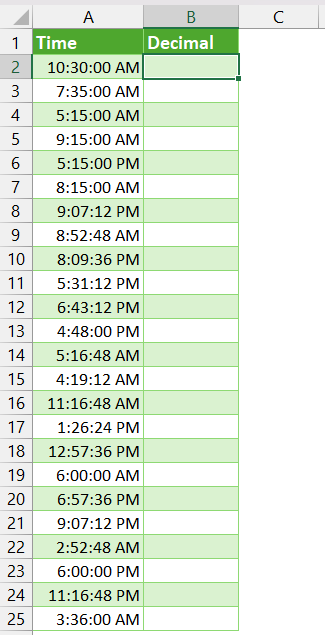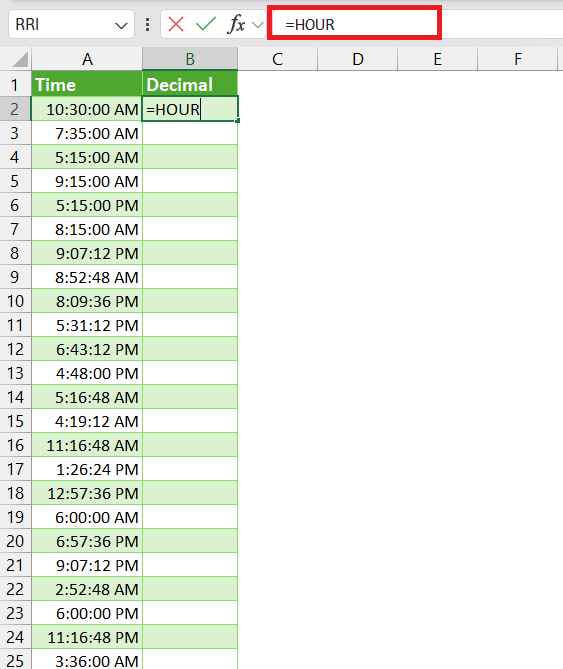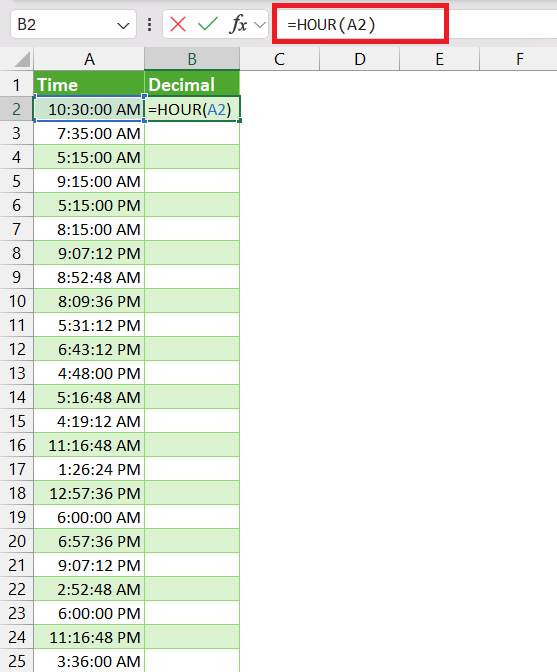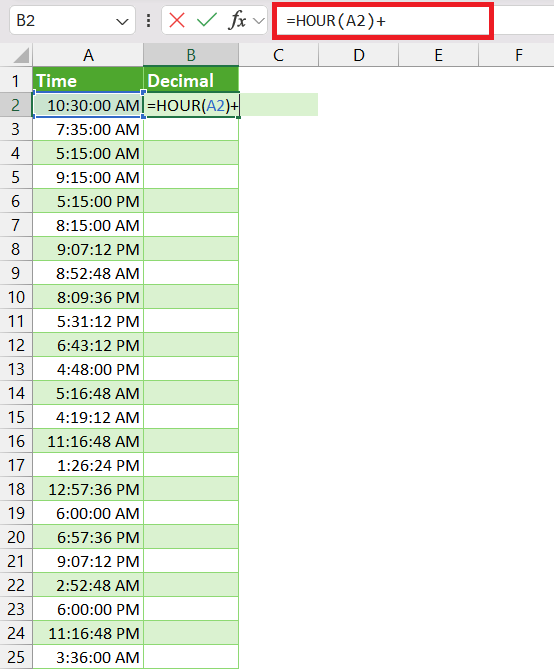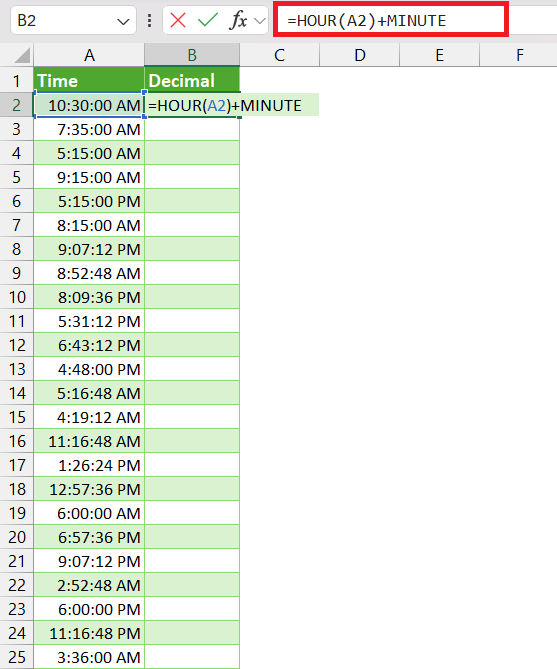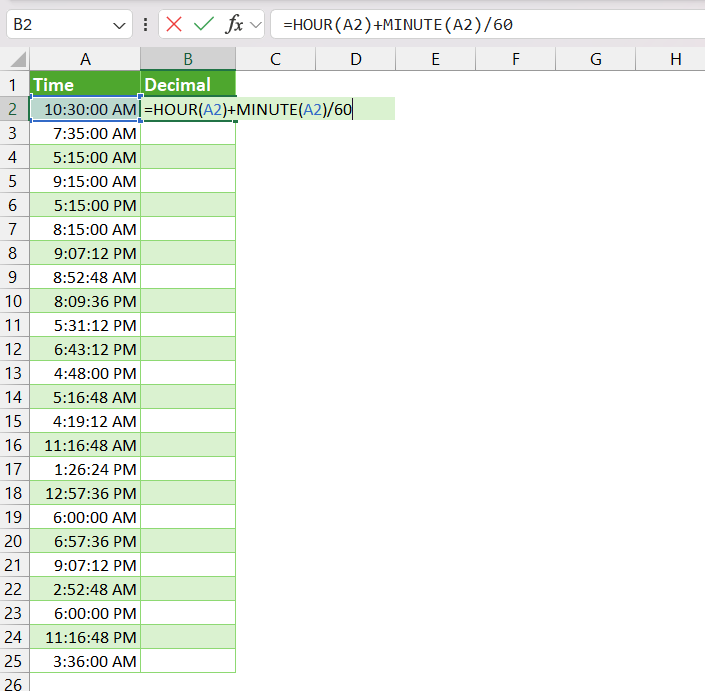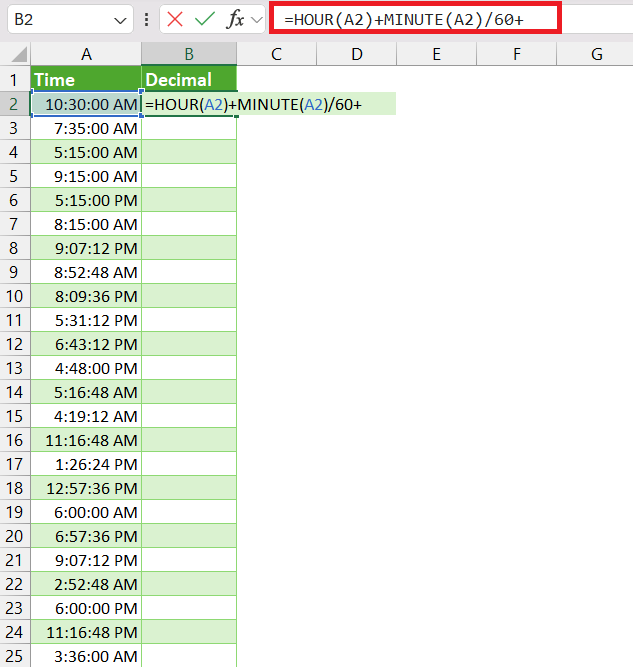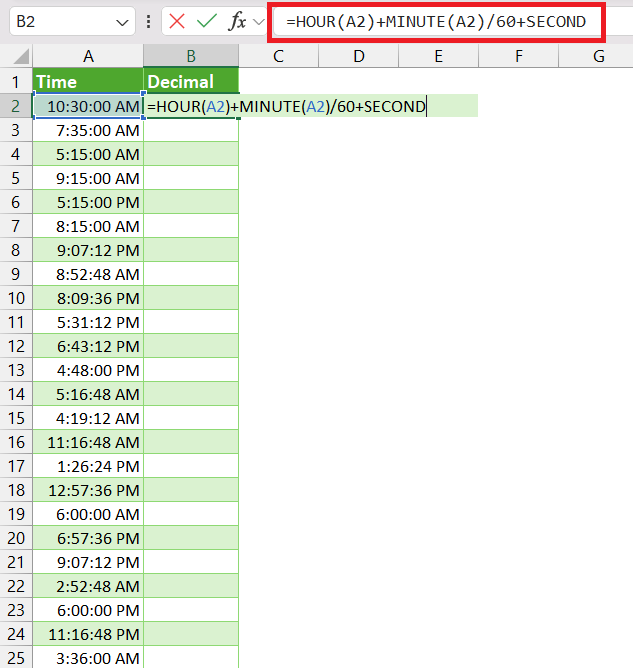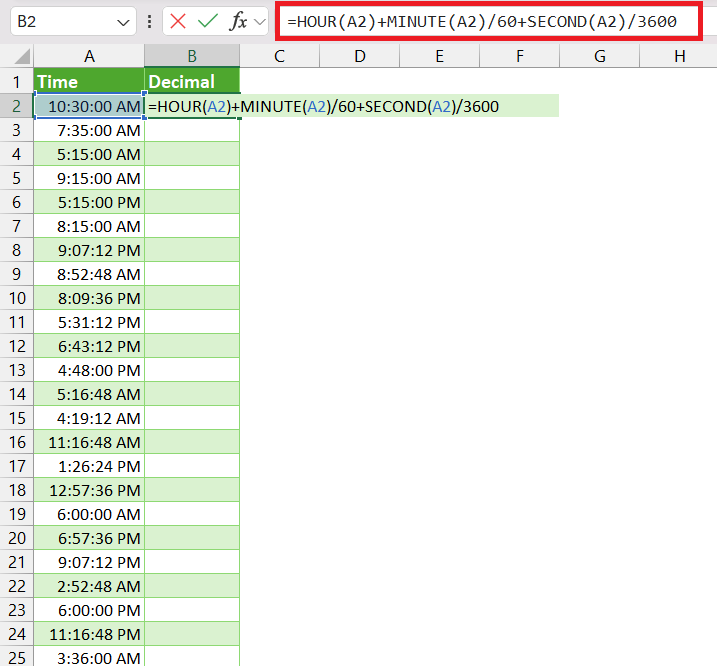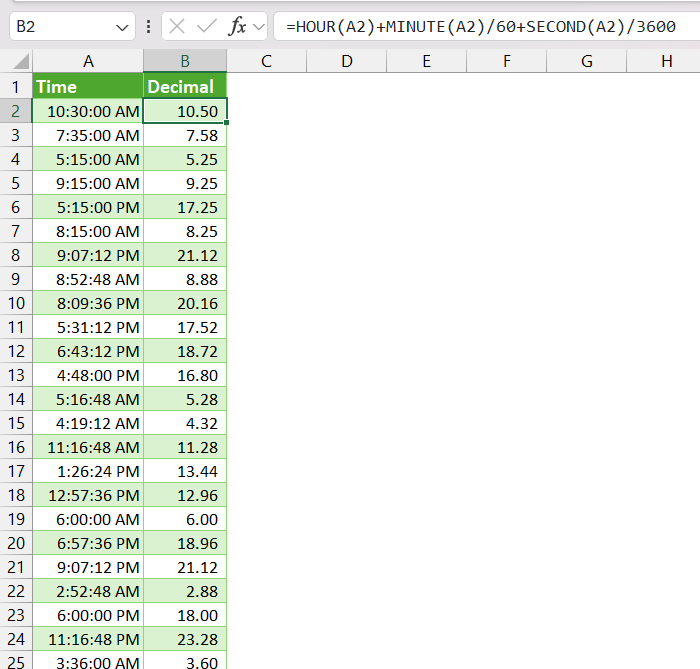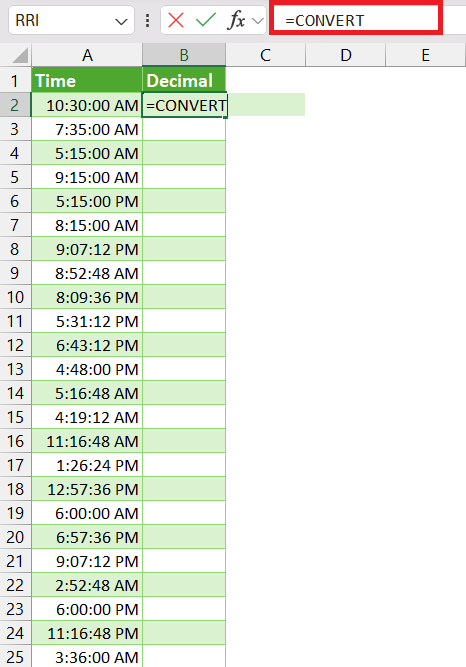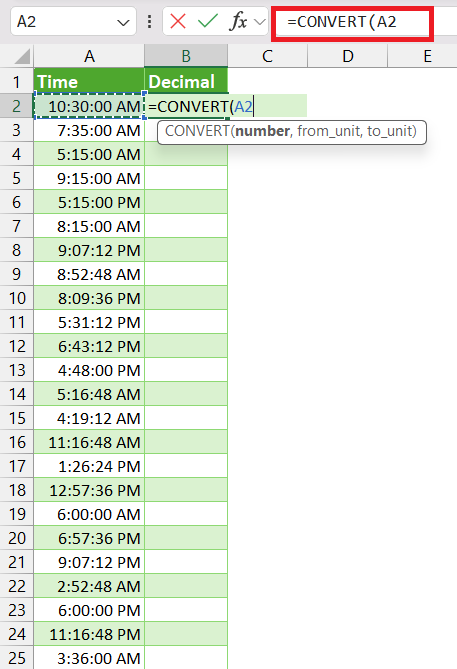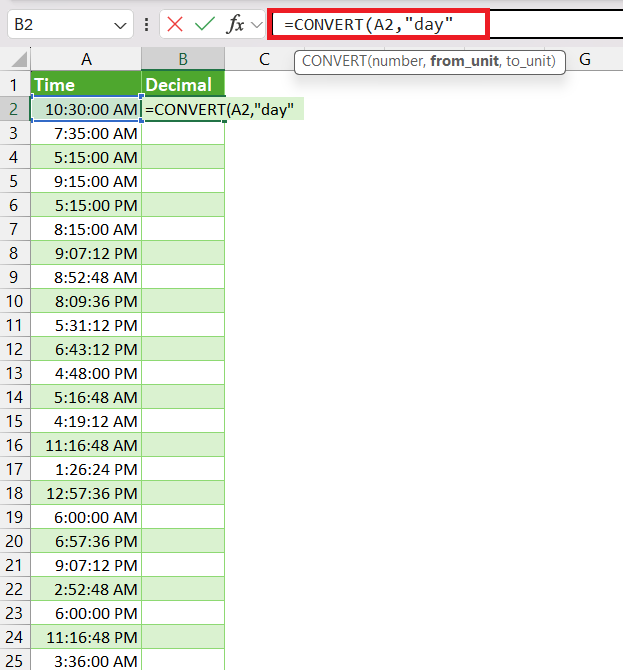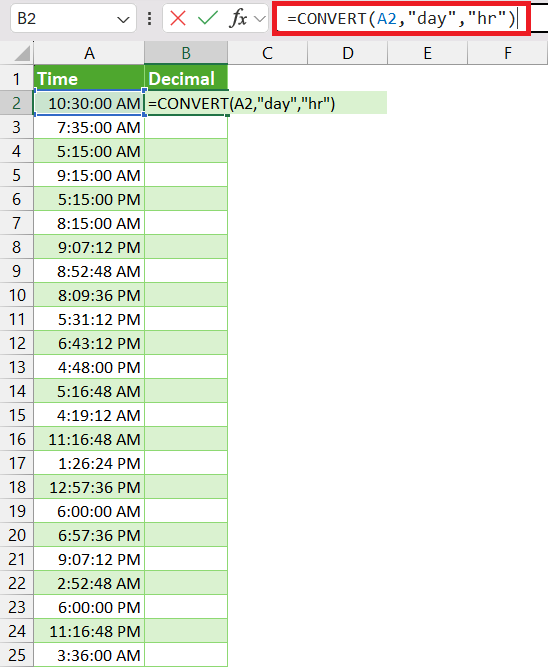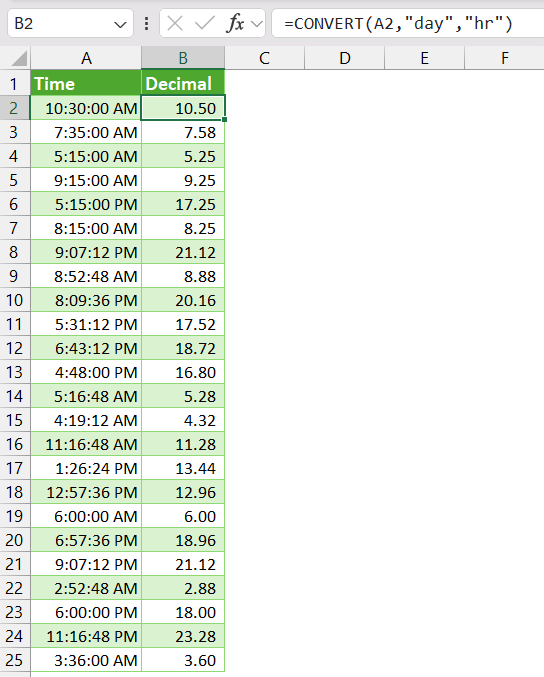Download the Excel Workbook below to follow along and understand How to Convert Time to Decimal in Excel – download excel workbookConvert-Time-to-Decimal.xlsx
Table of Contents
Method 1 – Multiplication
Excel stores time as numbers and a 24-hour day is equal to 1. To convert time to a number of hours, multiply the time by 24.
Method 2 – HOUR, MINUTE and SECOND
One straightforward way to convert time to decimal in Excel is by utilizing the HOUR, MINUTE, and SECOND functions. These functions are used to extract the hour, minute, and second components from a given time, respectively.
Suppose you have time displayed in the hh:mm:ss format in column A and you want to convert it into decimal format.
The general syntax to convert time to decimal is –
=HOUR(serial_number)+MINUTE(serial_number)/60+SECOND(serial_number)/3600
- HOUR(serial_number) – This extracts the hour component from the time value.
- MINUTE(serial_number)/60 – This extracts the minute component from the time value, and divides it by 60(the number of minutes in an hour) to convert it to hours.
- SECOND(serial_number)/3600 – This extracts the second component from the time value and divides it by 3600(the number of seconds in an hour) to convert it to hours.
By combining these three parts, the entire formula calculates the decimal representation of a given time value. Follow the steps below to achieve this result –
STEP 1: Enter the hour function.
=HOUR
STEP 2: Select the cell containing the time. Here, it is A2.
=HOUR(A2)
STEP 3: Enter the addition symbol (+).
=HOUR(A2)+
STEP 4: Enter the minute function.
=HOUR(A2)+MINUTE
STEP 5: Select the cell containing the time and divide the time by 60 to convert the minute component to an hour.
=HOUR(A2)+MINUTE(A2)/60
STEP 6: Enter the addition symbol (+).
=HOUR(A2)+MINUTE(A2)/60+
STEP 7: Enter the second function.
=HOUR(A2)+MINUTE(A2)/60+SECOND
STEP 8: Select the cell containing the time and divide the time by 3600 to convert the second component to an hour.
=HOUR(A2)+MINUTE(A2)/60+SECOND(A2)/3600
The time from the hh:mm:ss format can be converted into decimal format using this method.
Click here to learn more about time-related functions in Excel.
Method 3 – CONVERT
This function is exclusively available for Excel 365 users. It can be used to convert a number from one measurement system to another. The syntax is –
CONVERT(number,from_unit,to_unit)
- Number – It is the reference value.
- From_unit – It is the units of the original value.
- To_unit – It is the units for the result.
Follow the steps below to achieve this result –
STEP 1: Enter the CONVERT function.
=CONVERT
STEP 2: Enter the first argument i.e. number. Here, it is the cell containing time in hh:mm:ss format (A2).
=CONVERT(A2
STEP 3: Enter the second argument i.e. from_unit. Here, it is “day”.
=CONVERT(A2,”day”
STEP 4: Enter the third argument i.e. to_unit. Here, it is “hr”.
=CONVERT(A2,”day”,”hr”)
The time value will easily be converted to decimal format using the CONVERT function.
Click here to learn more about the CONVERT function in Excel.
Conclusion
In conclusion, while Excel represents time in the HH:MM:SS format, converting it to decimal becomes crucial for intricate calculations. This article explored three methods – employing the multiplication operator, utilizing HOUR, MINUTE, and SECOND functions, and leveraging the CONVERT function.
John Michaloudis is a former accountant and finance analyst at General Electric, a Microsoft MVP since 2020, an Amazon #1 bestselling author of 4 Microsoft Excel books and teacher of Microsoft Excel & Office over at his flagship MyExcelOnline Academy Online Course.

